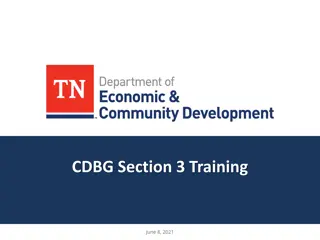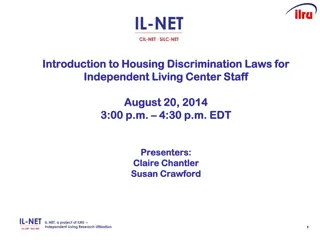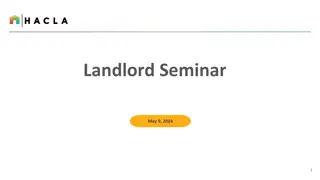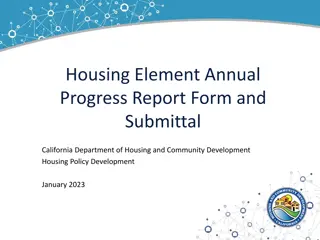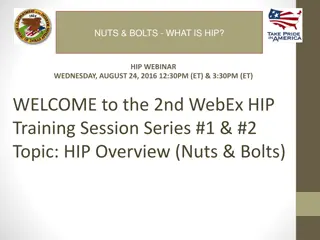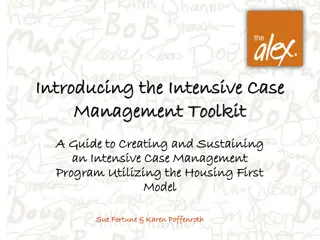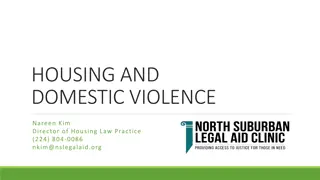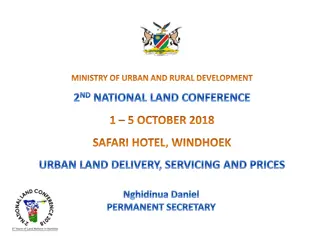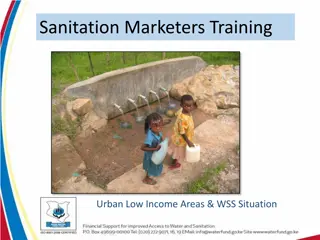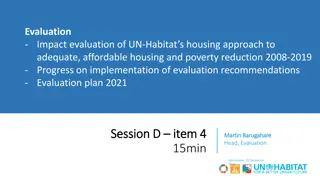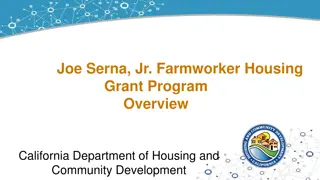Understanding Section 3 Requirements in Housing and Urban Development Act of 1968
This content details the Section 3 requirements outlined in the Housing and Urban Development Act of 1968, focusing on providing economic opportunities to low- and very low-income workers, public housing residents, and businesses. It explains the definitions of Section 3 workers and businesses, highlights the updates in the rules, and compares the old versus new requirements to emphasize sustained employment and other key aspects.
- Section 3
- Housing and Urban Development Act
- Low-income workers
- Economic opportunities
- Public housing
Uploaded on Sep 15, 2024 | 0 Views
Download Presentation

Please find below an Image/Link to download the presentation.
The content on the website is provided AS IS for your information and personal use only. It may not be sold, licensed, or shared on other websites without obtaining consent from the author. Download presentation by click this link. If you encounter any issues during the download, it is possible that the publisher has removed the file from their server.
E N D
Presentation Transcript
SECTION 3 REQUIREMENTS Presented by: Teresa M. Nobles FH&EO Specialist teresa.nobles@adeca.alabama.gov (334) 353-2010
SECTION 3 REQUIREMENTS Housing and Urban Development Act of 1968 direct employment and other opportunities to low- and very low- income workers, public housing residents, and businesses by providing economic opportunities to such workers.
SECTION 3 UPDATES OLD RULE - 24 CFR Part 135 Grants opened/awarded on July 1, 2021, and prior are subject to old rule. NEW RULE EFFECTIVE JULY 2, 2021 - 24 CFR Part 75 (Remember this Rule Very Important) Grants awarded on July 2, 2021, and forward must comply with new rule.
Targeted Section 3 Worker Section 3 Worker Section 3 Business DEFINITIONS
DEFINITION OF A SECTION 3 WORKER Someone whose income is below the limit set by HUD. Someone Employed by a Section 3 Business Someone who is a YouthBuild Participant.
DEFINITION OF A TARGETED SECTION 3 WORKER Someone employed by a Section 3 business Someone who is a resident of public housing or a Section 8 recipient Someone who is a YouthBuild Participant Someone who lives within the service area or neighborhood of the project (service area starts within 1 mile of the project area and can go up to 5,000 people within the project area)
DEFINITION OF A SECTION 3 BUSINESS 51% owned & controlled by low- or very low- income persons 51% owned by public housing residents or residents currently in Section 3 housing Over 75 % of labor hours are performed by Section 3 workers or in Section 8-assisted housing
COMPARING OLD VS NEW SECTION 3 REQUIREMENTS New rule focuses on sustained employment of low- and very low-income people New Rule 24 CFR Part 75 Old Rule 24 CFR Part 135 Permanent Job > Temporary Job Temporary Jobs = Permanent Jobs Focuses on labor hours instead of number of new hires Allows for various outcomes for different geographies and activities Old Rule 24 CFR Part 135 New Rule 24 CFR Part 75 Counts only Section 3 residents Counts Section 3 Workers instead of residents Public Housing resident Low- & Very Low-income people residents who live in the area where a HUD assisted project for housing or community development is located Prioritizes hiring of Targeted Section 3 Workers No recognition of Targeted Section 3 Worker
COMPARING OLD VS NEW SECTION 3 REQUIREMENTS New rule credits sustained employment by reporting employment benchmarks Old Rule 24 CFR Part 135 30% of people hired with Section 3 funding must be Section 3 residents 10% of funds for construction must be awarded to Section 3 businesses 3% of total funds for non-construction awarded to Section 3 businesses No updates to the benchmarks New Rule 24 CFR Part 75 25% of all labor hours must be performed by Section 3 worker 5% of all labor hours must be performed by Targeted Section 3 worker Benchmark Notice should be updated every 3 years New rule credits sustained employment by reporting business hiring benchmarks Old Rule 24 CFR Part 135 51% owned by Section 3 residents 30% of employees current Section 3 residents or in 1st 3 years of employment Subcontracts more than 25% of all subcontracts to Section 3 businesses New Rule 24 CFR Part 75 51% owned/controlled by low- or very low-income persons 75% of labor hours (over 3 months) performed by Section 3 workers 51% owned/controlled by current public housing/Section 8 residents
COMPARING OLD VS NEW SECTION 3 REQUIREMENTS New rule integrates Section 3 into program offices & reduces reporting requirements for Grantees who meet benchmarks Old Rule 24 CFR Part 135 New Rule 24 CFR Part 75 Enforcement & Compliance performed by Office of Fair Housing and Equal Opportunity Enforcement & Compliance integrated into regular program office work
SAFE HARBOR BENCHMARKS QUANTITATIVE EFFORTS 25% of all labor generated by certain HUD funds (CDBG) will, to the greatest extent feasible, go the Section 3 workers 5% of total labor will be performed by Targeted Section 3 workers Important the 5% goal for Targeted Section 3 workers is contained within the 25% goal All Targeted Section 3 workers are section 3 workers but not all section 3 workers are targeted section 3 workers
SAFE HARBOR REQUIREMENTS QUALITATIVE EFFORTS 1-Outreach efforts to generate job applicants who are Public Housing Targeted Workers. 2-Outreach efforts to identify and secure bids from Section 3 business concerns. 3-Division of contracts into smaller jobs to facilitate participation by Section 3 business concerns. 4-Provided or connected residents with assistance in seeking employment, including drafting resumes, preparing for interviews, finding job opportunities, connecting residents to job placement services. 5-Provided notices to Public Housing Authorities and Community Action Agencies to post on their boards. 6-Provided or connected residents with supportive services that can provide direct services or referrals Example includes Community Action Agencies. 7-Assisted residents to apply for or attend vocational/technical training See attached list of Technical Schools throughout Alabama.
COMMUNITY ACTION AGENCIES OF ALABAMA CSBGRegionsMap.pdf (alabama.gov)
POST SECONDARY AND TECHNICAL COLLEGES Alabama Technology Network - Auburn, AL Bevill State Community College - Jasper, AL Bishop State Community College - Mobile, AL Calhoun Community College Decatur, AL Central Alabama Community College - Alexander City, AL Chattahoochee Valley Community College - Phenix City, AL Coastal Alabama Community College- Orange Beach, AL Coastal Alabama Community College- Brewton, AL Drake State Community & Technical College - Enterprise State Community College - Enterprise, AL Faulkner University - Montgomery, AL Fortis College - Birmingham, Dothan, Mobile, and Montgomery, AL Gadsden State Community College - Gadsden, AL George C Wallace State Community College-Dothan-Dothan, AL George C Wallace State Community College-Hanceville - Hanceville, AL George C Wallace State Community College-Selma - Selma, AL Herzing University - Birmingham, AL ITT Technical Institute - Bessemer, Madison, and Mobile, AL Ingram State Technical College - Deatsville, AL John C Calhoun State Community College - Tanner, AL James H Faulkner State Community College - Bay Minette, AL Jefferson State Community College - Birmingham, AL Lawson State Community College-Birmingham Campus - Birmingham, AL Lurleen B Wallace Community College - Andalusia, AL Northeast Alabama Community College - Rainsville, AL Northwest Shoals Community College-Muscle Shoals - Muscle Shoals, AL Reid State Technical College - Evergreen, AL Remington College - Mobile, AL Shelton State Community College - Tuscaloosa, AL Snead State Community College - Boaz, AL South University - Montgomery, AL Southern Union State Community College - Wadley, AL Trenholm State Technical College - Montgomery, AL Troy University - Troy, AL University of South Alabama - Mobile, AL University of West Alabama - Livingston, AL
SUMMARY OF SECTION 3 REQUIREMENTS NEW RULE EFFECTIVE JULY 2, 2021- 24 CFR Part 75 All grants are required to report Section 3 information All grants are required to show Section 3 efforts at monitoring & at closeout Key to Section 3 is keeping good records New Section 3 rules must be in contractors agreement
SECTION 3 REPORTS: Form 2516 Employers -- Due to CDBG in October
SECTION 3 REPORTS: FORM 60002 --EMPLOYEES DUE TO CDBG IN APRIL
ADDITIONAL RESOURCES Section 3 Guidebook: Welcome - HUD Exchange Section 3 Frequently Asked Questions Welcome to the Section 3 Video Series! - HUD Exchange Questions? teresa.nobles@adeca.alabama.gov (334)353-2010





